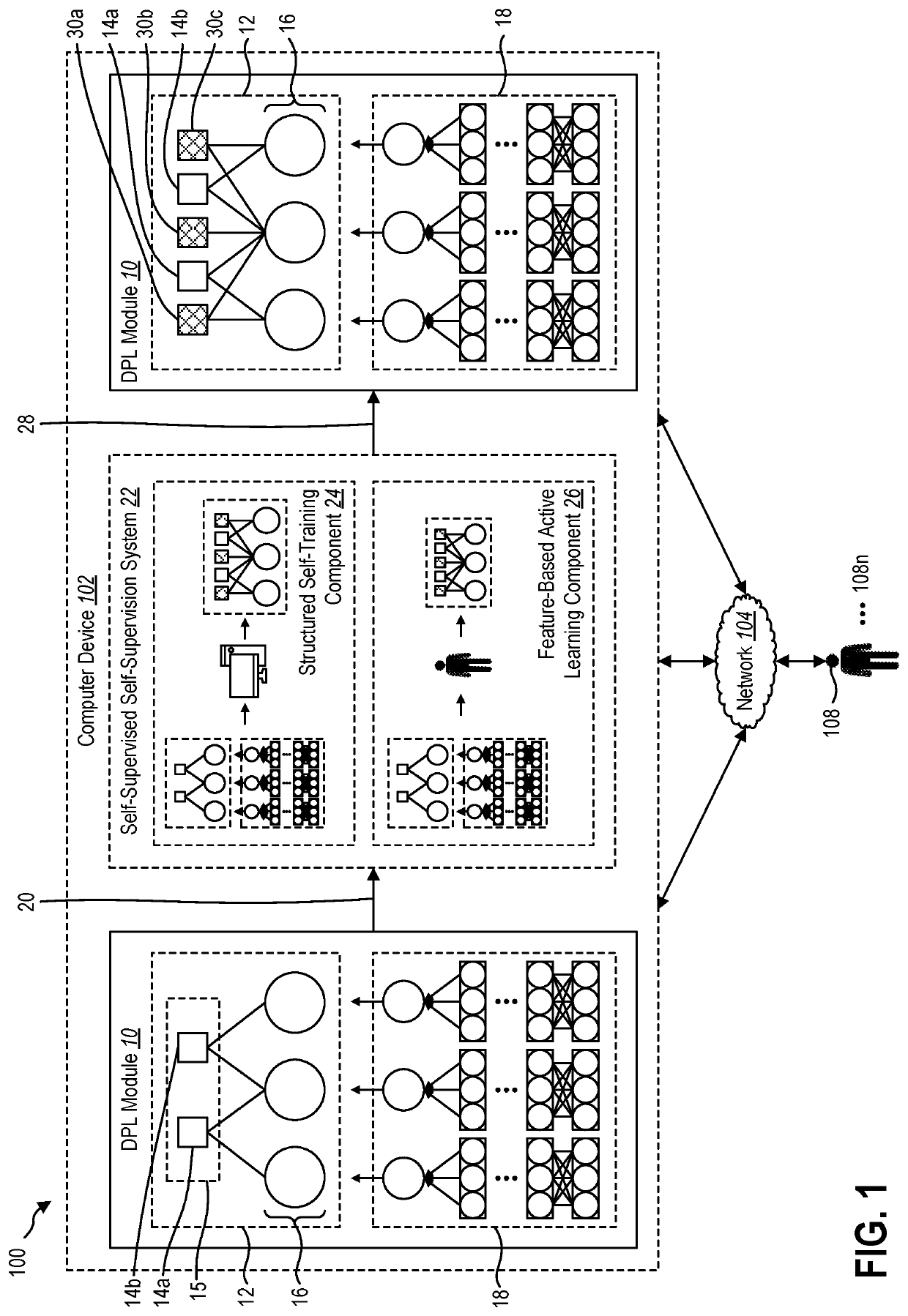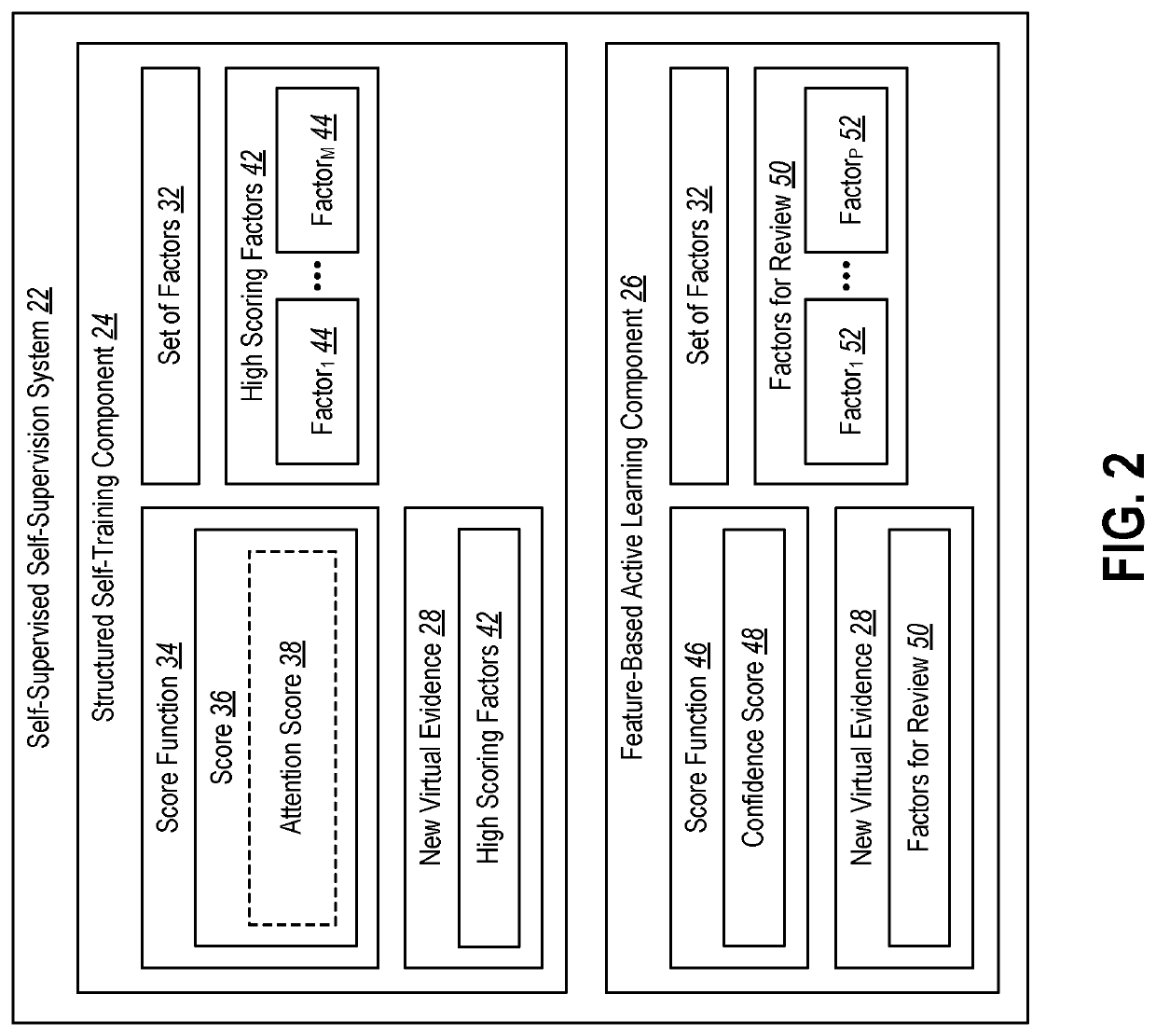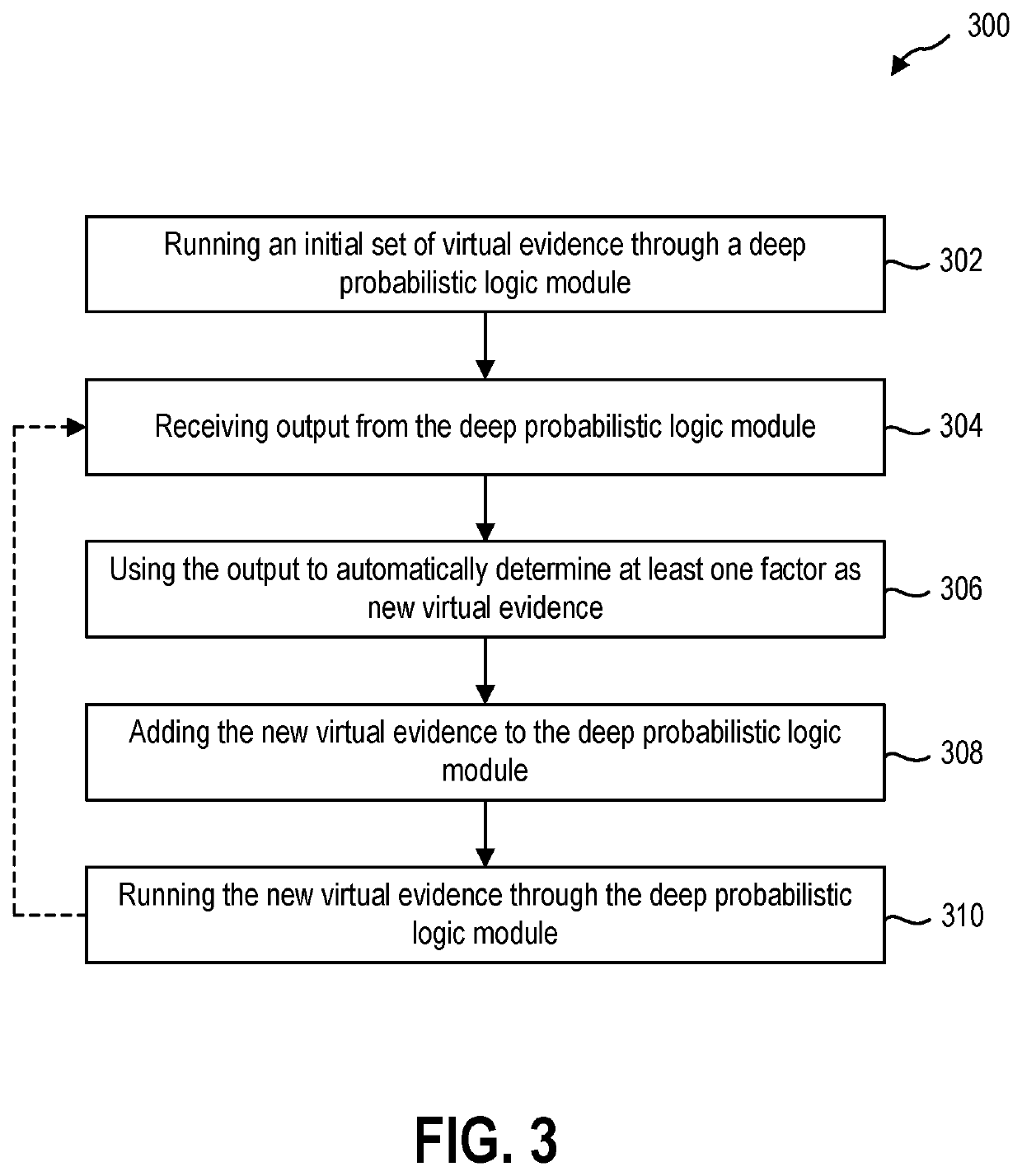Self-supervised self supervision by combining probabilistic logic with deep learning
a probabilistic logic and self-supervision technology, applied in the field of self-supervision by combining probabilistic logic with deep learning, can solve the problems that manpowering such self-supervisions to achieve high performance may still be tedious and challenging
- Summary
- Abstract
- Description
- Claims
- Application Information
AI Technical Summary
Benefits of technology
Problems solved by technology
Method used
Image
Examples
Embodiment Construction
[0016]This disclosure generally relates to machine learning. Contemporary methods in machine learning typically require very large amounts of labeled data to obtain good performance. Popular neural network architectures tend to need many thousands of training examples. While methods like transfer learning have enjoyed significant success in lower-data settings, the methods still require moderate amounts of labeled data to perform well. However, there are areas where it may be very expensive or unrealistic to produce a high volume of labeled data. Self-supervised machine learning typically deals with settings where labeled data is very limited and / or potentially expensive to obtain. One example where labeled data may be very limited or potentially expensive to obtain is healthcare. Self supervision may use a set of noisy, heuristically-generated, and possibly incomplete labels to learn a model, such as, but not limited to a discriminative or conditional model.
[0017]One example of sel...
PUM
 Login to View More
Login to View More Abstract
Description
Claims
Application Information
 Login to View More
Login to View More - R&D
- Intellectual Property
- Life Sciences
- Materials
- Tech Scout
- Unparalleled Data Quality
- Higher Quality Content
- 60% Fewer Hallucinations
Browse by: Latest US Patents, China's latest patents, Technical Efficacy Thesaurus, Application Domain, Technology Topic, Popular Technical Reports.
© 2025 PatSnap. All rights reserved.Legal|Privacy policy|Modern Slavery Act Transparency Statement|Sitemap|About US| Contact US: help@patsnap.com



